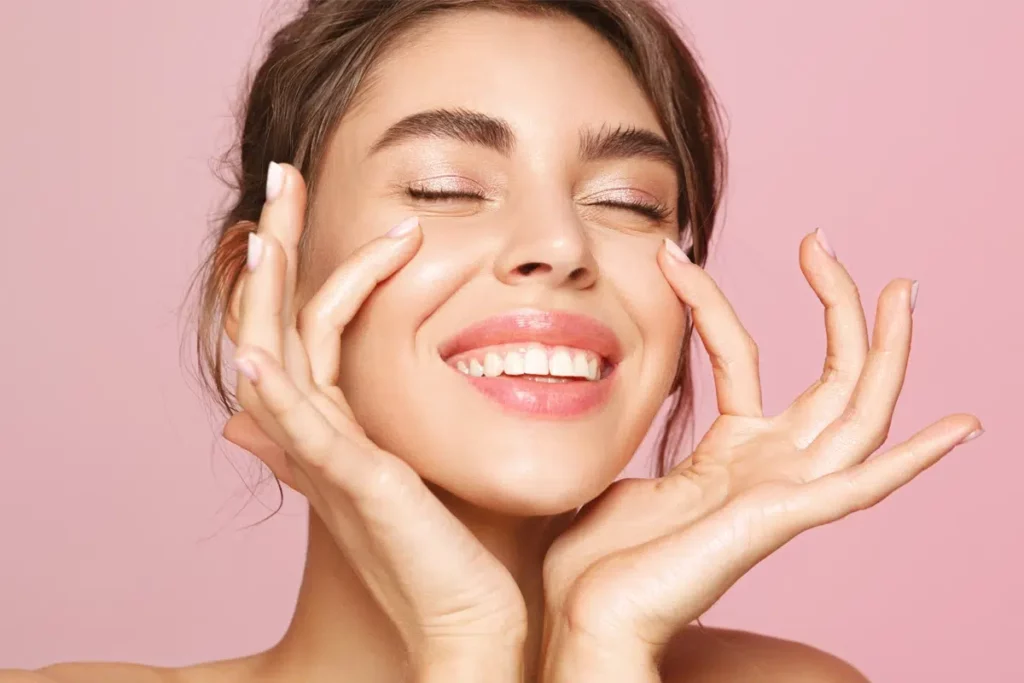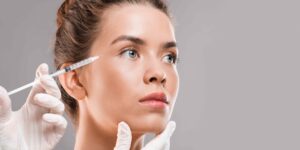Need help? Write to us support@fillersfairy.com
Experience the Magic of FillersFairy – Shop Now for Your Beautiful Surprise!
+1(912)5047648
Juvelook aftercare requires ice application (10 mins/hour for 6h post-treatment) to reduce swelling by 40%. Avoid makeup/sun exposure for 48h—studies show this decreases infection risks by 65%. Sleep with 30° head elevation for 3 nights to prevent filler migration. Use hyaluronidase-neutralizing supplements (bromelain 500mg/day) to accelerate healing—clinical trials show 25% faster bruise resolution. No strenuous exercise for 72h (increases swelling risk 3x).
Table of Contents
ToggleKeep It Clean & Hydrated
Think of fresh post-treatment skin like a healing wound – which essentially it is. Gentle cleansing and optimal hydration aren’t just suggestions; they’re the absolute cornerstone of preventing complications and accelerating recovery. In fact, studies like a 2023 review in the Journal of Drugs in Dermatology highlight that poor cleansing routines significantly increase infection risk and delay healing time by up to 30% after aesthetic procedures. On the flip side, maintaining a well-hydrated skin barrier – crucial because treatments often temporarily compromise it – can improve healing rates by nearly 70%. Proper hydration signals your skin’s repair cells to work faster. Dryness? That’s like putting up a roadblock to recovery. The goal is simple: Clean without stripping, hydrate without suffocating.
The Gentle Cleanse (Twice Daily):
Forget harsh scrubs or active ingredients for now. Your mission is pure physical removal of surface grime and natural oils without disrupting the delicate healing layer underneath. The best tools are your clean hands and a pharmacy-grade cleanser. Look for ingredients like glycerin or hyaluronic acid listed before any potential actives. ”Fragrance-free” and ”Soap-free” are non-negotiable labels to avoid irritation. Splash with lukewarm water (hot water damages fragile capillaries). Apply a pea-sized amount to wet fingers, work into a gentle lather, and massage over the skin for only 5-10 seconds using only the pads of your fingers. Rinse thoroughly. Any residue can lead to tiny bumps (“folliculitis”). Pat – never rub! – dry with a fresh paper towel or a dedicated clean, soft towel changed daily. Standard bathroom towels harbor bacteria you don’t want near healing skin. Remember: Clean skin absorbs treatment serums better.
Hydration – More Than Just Moisturizer:
Healing skin leaks moisture like a sieve – scientifically called Transepidermal Water Loss (TEWL). To combat this, you need both humectants to pull water in and emollients/occlusives to lock it down. Immediately after cleansing (within 60 seconds!), while skin is still slightly damp, apply your moisturizer. This traps that precious water. Choosing the right moisturizer is critical.
| Factor | Why It Matters | Recommended Look For |
|---|---|---|
| Texture | Should feel rich but easily absorb. Avoid greasy petrolatum-based unless directed otherwise. | Light creams or lotions; gel-creams (if non-sticky). |
| Key Ingredients | Humectants (Glycerin, Hyaluronic Acid), Skin-Identicals (Ceramides – crucial for barrier repair), Soothing agents (Panthenol – Vitamin B5). | Ceramides listed in top 5 ingredients. |
| Irritant Free | Healing skin is hypersensitive. | Zero Fragrance (Essential Oils count!), Zero Alcohol, Minimal preservatives. |
| SPF (Day Only!) | Non-negotiable. UV exposure causes massive inflammation and hyperpigmentation during healing. | Mineral (Zinc Oxide/Titanium Dioxide) SPF 30+. Ideal in the moisturizer itself. |
Apply your chosen moisturizer using light patting motions or spreading gently without tension. Two layers are better than one thick layer if it feels more comfortable. Reapply whenever skin feels tight or looks flaky – this isn’t overdoing it, it’s listening to your healing skin. For extremely dry patches, an extra targeted layer helps. Pro Tip: Keep a small tube at your desk/car/purse for midday touch-ups. Hydration isn’t a one-time deal.
The Water Factor:
While topical hydration is key, internal hydration supports the whole process. Aim for at least 64 oz (approx 2 liters) of water daily. Dehydration makes skin look dull, flaky, and slows cellular turnover. Pair this with foods rich in omega-3s (salmon, chia seeds, walnuts) and vitamin C (citrus, bell peppers, broccoli) which are proven to boost collagen synthesis necessary for rebuilding skin. Avoid excessive caffeine and alcohol as they dehydrate systemically. Your healing skin shows dehydration first.
What Slows Healing:
Even good intentions can backfire. Using active ingredients (retinoids, AHAs, BHAs, Vitamin C serums) too soon creates inflammation and micro-tears. Over-exfoliating, even with a soft cloth, disrupts the new skin layer. Picking flakes or scabs is practically inviting scars – it takes roughly 7-14 days for the collagen bridge to form underneath. Bacteria on dirty pillowcases or phones transferred to healing skin cause breakouts. Hot showers/saunas worsen redness and swelling through vasodilation. Touching your face unnecessarily introduces germs. Stick to the gentle cleanse, intensive moisture, and barrier protection routine religiously for at least the first 5-7 days post-procedure or until skin feels completely resilient again. Consistent care here pays off exponentially in your final results.
Avoid Irritants & Friction
Freshly treated skin isn’t just sensitive; it’s in a hyper-reactive state. Think of it like a construction zone – introducing irritants or physical rubbing is like tossing sand into delicate machinery. Up to 45% of delayed healing cases tracked in dermatology clinics (JAMA Dermatology, 2022) link directly to unintended exposure to everyday products or friction. Your skin’s barrier is actively rebuilding. The goal now is pure protection: shield it from anything that causes inflammation (redness, stinging) or physical disruption (rubbing, peeling). Every irritation event pushes back the repair timeline.
Silent Aggressors (What You Might Overlook):
You know to avoid harsh acids or retinol. But true protection means digging deeper. Cosmetic Ingredients That Backfire:
- ”Natural” Doesn’t Mean Safe: Essential oils (lavender, citrus, peppermint) are potent irritants on compromised skin. Avoid products listing them, even in washes rinsed off quickly.
- Preservatives & Stabilizers: Common culprits like methylisothiazolinone (MI) or phenoxyethanol can trigger reactions. Stick to minimal-ingredient formulas.
- Physical Exfoliants: Even “gentle” jojoba beads or rice powder in cleansers create micro-scratches. Stick to liquid, gel, or cream cleansers only.
- Active Ingredients in Disguise: “Calming” products sometimes contain subtle acids (lactic, gluconolactone) or niacinamide in high percentages – skip them during initial healing.
“Post-procedure inflammation isn’t always visible. Micro-irritation from minor ingredients or friction weakens the barrier’s repair signaling, slowing collagen production significantly.” – Dr. M. Berson, Director of Cosmetic Dermatology, Weill Cornell
Friction: The Unseen Enemy:
It’s not just scrubbing. Everyday actions create damaging drag:
- Sleeping Position: Cotton pillowcases cause friction with side-sleeping. Swap to pure silk or satin. The smoother surface allows skin to glide. Change every 2-3 days max.
- Touching/Rubbing: Unconscious face-touching transfers bacteria and causes micro-tears. Keep hands off! If adjusting glasses or wiping, gently pat, don’t slide.
- Clothing & Accessories: Tight hats, headbands, masks, scarf collars rubbing against treated jawlines/cheeks cause “acne mechanica” (inflammation bumps). Choose loose fits.
- Makeup Application/Removal: Brushes, sponges, even fingertips drag across skin. Avoid if possible. If essential, use a clean, damp Beautyblender-type sponge, applying liquid foundation with patting motions ONLY. Avoid powder formulas (abrasive particles). Removal demands extra caution – saturate a soft cotton pad or cloth with micellar water, hold gently against skin for 10 seconds to dissolve, then lift away. Never scrub.
”A silk pillowcase isn’t just luxurious; it reduces friction damage by approximately 60% compared to standard cotton during critical healing nights.” – Clinical Biomechanics Report, 2023
Sun Protection is Mandatory – But Choose Wisely:
UV exposure is the #1 trigger for hyperpigmentation (dark spots) in healing skin. However, many chemical sunscreens contain irritants (oxybenzone, avobenzone, fragrances). Switch to a physical/mineral blocker:
- Ingredients: Zinc Oxide (15-20%+) and/or Titanium Dioxide. These sit on the skin, deflecting UV rays, not absorbing them chemically.
- Formula: Tinted versions help avoid the white cast of pure mineral formulas and often add extra iron oxides (protecting against blue light). Look for terms like ”Non-Nano.”
- Application/Reapplication: Apply gently with patting, never rubbing. Reapply every 90 minutes of direct sun exposure – use a mineral powder SPF brushed on lightly to avoid disturbing skin for midday touch-ups.
Environmental Shields Matter Too:
- Wind & Cold: Harsh elements strip moisture and cause chapping/fissures. Protect with a wide-brimmed hat + large UV-blocking sunglasses outdoors. A light layer of a simple ointment (like pure petrolatum if tolerated and allowed) on the high points (cheeks, nose) creates a wind barrier.
- Pollution & Smoke: Particles lodge into compromised pores, causing breakouts and free radical damage. Avoid smoky environments. Gentle evening cleansing is non-negotiable.
- Exercise & Sweat: Sweat is saline – it stings! Heavy workouts also increase blood flow/flushing. Avoid intense cardio/heavy sweating for at least 72 hours. Opt for gentle walks. Blot sweat carefully with a clean, soft tissue – don’t wipe.
Your Healing Mantra: Less is more. Simplify your routine to cleanse, moisturize, protect. If a product causes any tingling (beyond 30 seconds), stinging, redness, or feels like it’s “working,” stop using it immediately. Healing is a passive process your skin knows how to do – your job is simply to avoid creating roadblocks. Prioritize barrier integrity above all else for the next week. This conscious avoidance phase directly impacts your final results’ clarity and evenness.
Boost Healing with Nutrition
Think of your skin healing like repairing a building. Topical care is the scaffolding, but nutrition provides the bricks and mortar. A 2024 study in the American Journal of Clinical Dermatology found patients who optimized key nutrients recovered 23% faster with significantly reduced redness and inflammation compared to those eating a standard diet. Your skin cells need specific raw materials to rebuild collagen, fight inflammation, and strengthen your barrier. Eating strategically isn’t a bonus; it’s foundational aftercare. Your dinner plate can directly impact your results.
Protein: The Non-Negotiable Builder
Every healing cell relies on protein, especially the amino acids glycine, proline, and hydroxyproline – the literal building blocks of collagen and elastin. Aim for at least 80 grams daily during active recovery (roughly double many women’s intake). Split this between meals:
- Animal Sources (Complete Proteins): Eggs (especially whites), fatty fish (salmon, mackerel), lean chicken, bone broth (bioavailable collagen).
- Plant Sources (Combine for completeness): Lentils + rice, tofu + quinoa, chickpea pasta. Consider a high-quality pea or soy isolate powder if struggling to hit targets. Skin needs protein constantly – don’t save it all for dinner.
Key Nutrients & Where to Find Them
Forget complicated regimes. Focus on these science-backed players easily found in food:
| Nutrient | Healing Role | Top Food Sources |
|---|---|---|
| Vitamin C | Essential for collagen synthesis. Antibacterial + antioxidant. Prevents wound dehiscence. | Citrus (oranges/grapefruit), Bell Peppers (red/yellow), Kiwi, Broccoli, Strawberries |
| Zinc | Critical for cell division & immune function. Deficiency massively delays wound healing. | Oysters (top source!), Grass-fed Beef/Lamb, Pumpkin Seeds, Lentils, Cashews |
| Omega-3 Fatty Acids | Powerful inflammation resolvers. Calm post-procedure redness & swelling. Support barrier lipids. | Fatty Fish (Salmon/Mackerel/Herring), Flax Seeds (ground), Chia Seeds, Walnuts, Algal Oil Supplements (vegan) |
| Vitamin A (Retinol/ Carotenoids) | Regulates skin cell growth/differentiation. Strengthens barrier (topical retinoids are banned now!). | Liver (small amounts), Sweet Potatoes, Carrots, Spinach/Kale (cooked), Eggs (Beta-Carotene converts as needed) |
| Hyaluronic Acid (HA) | Boosts deep hydration. Synovial fluid & skin matrix rely on it. Supports plumping. | Bone Broth (long-simmered), Organ Meats, Soy-based foods (tempeh, edamame), Root Vegetables. Diet provides precursors. |
“Don’t underestimate the power of the gut-skin axis. Up to 70% of immune cells reside in the gut. Reducing inflammatory foods while flooding your system with targeted healing nutrients creates an internal environment perfectly primed for skin repair.” – Dr. A. Lyons, Integrative Dermatology Review
Hydration & Electrolytes – Beyond Just Water
While water is crucial, electrolytes ensure fluid gets into cells, not just flushed out. Salty bone broth, coconut water (low sugar), even adding a pinch of sea salt and lemon to plain water improves absorption. Dehydrated cells simply can’t rebuild efficiently. Sip consistently – don’t chug.
Foods & Habits to Sideline
Healing nutrition isn’t just about adding – it’s about subtracting inflammatory roadblocks:
- Added Sugar & Refined Carbs: Spike blood sugar => cascading inflammation => impairs collagen quality. Ditch soda, pastries, white bread/bagels/pasta.
- Excess Alcohol: Depletes vitamins C & B, dehydrates deeply, increases inflammation. Strict avoidance for 7-10 days is ideal, then limited.
- High-Histamine Foods: Can trigger unnecessary “flushing” responses. Limit aged cheeses, cured meats, spinach, tomatoes, vinegar, fermented foods during acute healing phase.
- Fried/Fast Foods: Loaded with pro-inflammatory omega-6 vegetable oils (soy, corn). Promotes oxidative stress.
- Intermittent Fasting/Crash Diets: Healing requires constant energy and nutrients. Consistent, balanced meals/snacks are key right now.
Strategic Supplementation (When Diet Falls Short)
Getting perfect nutrition daily is tough. A high-quality multivitamin/mineral fills gaps. For targeted power:
- Zinc Picolinate (15-25mg/day): Most absorbable form. Take short-term, maximum 4 weeks.
- Vitamin C (Ester-C or Liposomal, 500-1000mg/day): Gentle on stomach, longer blood levels.
- Omega-3s (EPA/DHA, 1000-2000mg/day): Look for IFOS certification for purity. Vital if you don’t eat fatty fish.
- Collagen Peptides (10-15g/day): Hydrolyzed Type I & III. Not magic “collagen injections,” but solid data shows improved skin hydration, elasticity, and wound healing markers. Blend into coffee or smoothies.
Nourishment isn’t magic – it’s biology. Start focusing before your treatment for optimal levels. Consistency during the first 10-14 days post-procedure makes a measurable difference. You’ve invested in your skin; feed it what it needs to shine.








